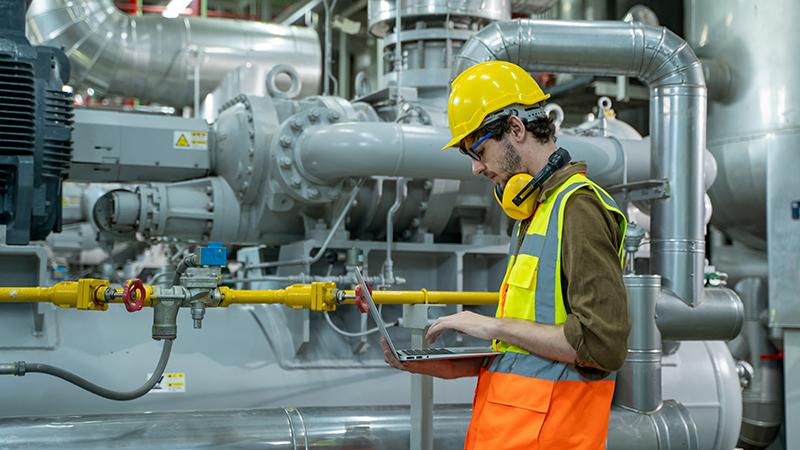Common humidity measurement problems and how to avoid them
Have you joined us for the Vaisala Humidity Academy series of webinars? If you have, we hope you’ve deepened your understanding of industrial humidity measurement. If you’ve not yet checked out the episodes. To complement the series, this blog post discusses some common pitfalls when installing sensors – helping you to avoid the errors caused by incorrect installation.
Accurate measurement starts with correct installation
There are many common mistakes made when installing sensors, all of which can lead to measurement errors. Inaccurate measurement can lead to excess energy usage, low product quality and process efficiency, expensive recalls due to non-compliance, and suboptimal conditions for people in buildings. The tips below will help you get your installation right first time, improving your measurement accuracy.
When installing internal wall-mounted sensors, always:
1. Select the right installation location
The most important consideration when installing a measurement sensor to control an occupied space is its location. You want to measure the conditions that people are experiencing in the room, so it’s essential you pick a representative location with free airflow and no nearby heat sources.
Some common errors to avoid:
- Mounting a sensor in an area with restricted airflow, such as behind a door, equipment, or furniture.
- Mounting a sensor near anything that produces heat, such as a radiator, heating duct, or above a printer or photocopier.
- Mounting a sensor in direct sunlight – make sure you consider the sun at all points of the day.
- Mounting a wall-mounted sensor on the ceiling.
- Mounting a sensor in line with an air duct – this can change the sensor reading faster than the space itself has time to equilibrate, meaning more frequent adjustments are made to the system.
2. Mount your sensor in the right direction
Wall-mounted sensors have both the sensor and the electronics in one compact box, so they are designed to be mounted in a defined direction. Any heat generated in the electronics flows upwards, so the sensor needs to be below the electronics to ensure the heat doesn’t affect the measurement. In addition, if the sensor is mounted sideways, hot air will not be able to escape, resulting in a higher temperature reading and a lower humidity reading.
3. Mount multiple sensors side by side
Some wall sensors generate heat, so it’s not recommended to mount a temperature or humidity sensor above another wall unit. If you do, the heat can affect the other sensor’s measurements – this can be a particular issue for gas sensors, which are known to generate more heat than other sensors. Instead, you should ideally mount sensors side by side following the manufacturer’s installation recommendations. If you must mount sensors above each other, the warmer sensor should be placed well above any other sensors.
4. Consider the airflow in the room
Standard humidity and temperature sensors are designed to work well in a typical office environment. If you’re putting sensors in a room with a forced downwards airflow, such as a cleanroom, hot air from the top of the electronics will flow down onto the sensors and raise the measured temperature. The solution to this is to use a sensor that is designed for cleanrooms and similar spaces. In these sensors, the sensor and the electronics have been set apart. This keeps the sensors away from any heating, but still allows for sufficient contact with the environment.
5. Be aware of pressure differences and poor sealing
If there is a pressure difference between the room you’re measuring and the wall cavities in the building it can lead to inaccurate readings. Lower pressure in the room can cause cold air to flow directly into the sensor through the wiring opening in the wall, lowering the temperature reading significantly. The solution to this is to seal the cable feedthrough.
6. Avoid errors caused by conduction
Concrete and steel walls can conduct heat, so sensors bolted to the wall may not accurately indicate the actual air temperature and humidity. The solution to this is to add a layer of insulation between the wall and transmitter, or to mount the sensor on an interior wall or more insulated surface.
Concrete also affects CO2 measurements – if you mount a CO2 sensor on a concrete surface you will get an extremely low CO2 reading that is not representative of the air in the room. Fixing a plate below the sensor will usually fix this problem.
7. Avoid errors caused by body heat
This sort of error is usually seen in handheld measurements, where body heat causes inaccurate readings. If you’re taking handheld measurements, don’t hold the measurement device too close to your body and avoid breathing on the sensor.
When installing duct-mounted sensors, always:
1. Ensure internal and external temperatures are balanced
For duct-mounted devices, the most common source of error is the temperature difference between the air inside and outside the duct, for example if you are looking to measure the outdoor conditions from inside an inlet duct. Temperature differences can cause heat to flow through the duct sensor tube, distorting the temperature and humidity readings.
These effects will be more pronounced in insulated ducts or those with low airflow speeds or shorter sensor insertion depths. The solution is to use a high-quality outdoor sensor or to properly insulate the sensor.
2. Protect against condensation damage
If there is high humidity in the duct, and a lower temperature outside, conduction can cool the sensor tube, causing condensation to form on the sensor. Condensation can also form inside the duct and run down the tube to the sensor. If the sensor is angled downwards this can cause incorrect readings or even corrosion. To minimize the effects and possible damage caused by condensation, you should mount the sensor horizontally or, if necessary, slightly tilted upwards. This will allow any condensation to fall safely away from the sensing element.
3. Don’t mount sensors in a dead leg
As we have seen with internal wall-mounted sensors, it’s important to mount sensors in a representative location. If you mount a sensor in a dead-leg duct section, air may not flow past the sensor, meaning the measurement will not be representative of the conditions of the main flow. Air lingering around the sensor will change more slowly than the main flow, so readings will not always be accurate for current conditions. Always make sure your sensor has consistent contact with proper airflow, avoiding dead-leg mounting locations.
4. Consider your options when installing partly inside a process
For sensors that are installed partly inside a process and partly outside, the difference in temperature can be very large. For example, when measuring the temperature and relative humidity in a baking oven through an insulated wall, a metal sensor body with a thermal leak will lead to the sensor giving a lower temperature and a higher relative humidity reading than the actual oven conditions. The thermal leak is flow dependent – in still air the probe will cool more, leading to a larger error margin. With higher humidity, not only will the temperature and relative humidity measurements be wrong, you will also have a condensation problem.
There are two solutions to this issue. The first is to improve the installation: move the probe deeper into the process and/or insulate any part of the probe that is external to the process. This minimizes the temperature difference and allows you to measure relative humidity accurately. You could also consider if you really need to measure relative humidity in the first place. Other parameters are available – some with the advantage of not being temperature dependent, allowing you to use a heated probe so no condensation can form.
5. Don’t mount sensors too close to a humidifier
Duct humidity sensors are often used for humidification control, which is achieved using foggers or spray humidifiers. Mounting a duct sensor too close to a humidifier causes water to collect on the sensor and build up in the form of condensation, making it impossible to take accurate measurements.
In the worst cases the sensor will be ruined, but even in less serious cases it is impossible to accurately control anything using measurements taken by a sensor that is constantly affected by moisture. The periodic wetting and drying of the sensor will cause wild swings in humidity readings, making equipment run constantly and conditions to be incorrectly maintained. On top of this, sensor drift and contamination will be accelerated, further compounding the inaccuracies.
To avoid these issues, duct sensors should be mounted a sufficient distance from humidifiers. This distance will depend on duct size and flow rates, but as a rule of thumb, five meters is recommended. When mounting a duct sensor, it’s also a good idea to make an additional access port downstream of the sensor that can be used to temporarily install a reference probe to verify and calibrate your primary sensor. This port can be covered with duct tape when not in use to avoid leaks.
When installing outdoor sensors, always:
1. Use a solar radiation shield
Solar radiation can easily heat sensors by 2°C (4–5°F). To avoid the effects of solar radiation, use a sensor with a high-quality radiation shield that is black under the plates. Wind will reduce heating, so mount your sensor in a location with free air flow; you should also keep your radiation shield clean as a dirty shield will heat up more. Cleaning may be needed more often in urban locations – if the outside of the shield looks black or dirty, cleaning is already overdue! If you are wall mounting your sensor, north-facing walls are usually a better choice as they get less sun exposure.
2. Protect your sensor from rain and heavy weather
Rain, snow, or condensation can all lead to water being on or near your sensor, causing drift and humidity readings that are too high. Heavy weather can also cause damage to the sensor. There are several ways to protect your sensor from the weather:
- Use a sensor designed to work in humid outdoor conditions
- Mount the sensor in a location with good airflow – wind will cause water to evaporate, ensuring reliable measurements
- For industrial applications, use a heated probe to eliminate the effects of condensation
3. Mount your sensor away from other sources of heat
The walls of buildings can have high thermal mass and store heat or cold; they can also get heated by solar radiation. If your sensor is mounted close to a wall or black roofing without enough offset, it can make your measurements inaccurate.
To reduce these kinds of heating effects, outdoor measurement sensors should be mounted in a location where air flow and wind is unhindered, ideally on a pole completely away from any buildings, or on the roof. Avoid dark surfaces in direct sunlight and do not mount sensors under the eaves of a roof. This is because hot air accumulates under the eaves, causing inaccurate and unreliable measurement results.



Add new comment